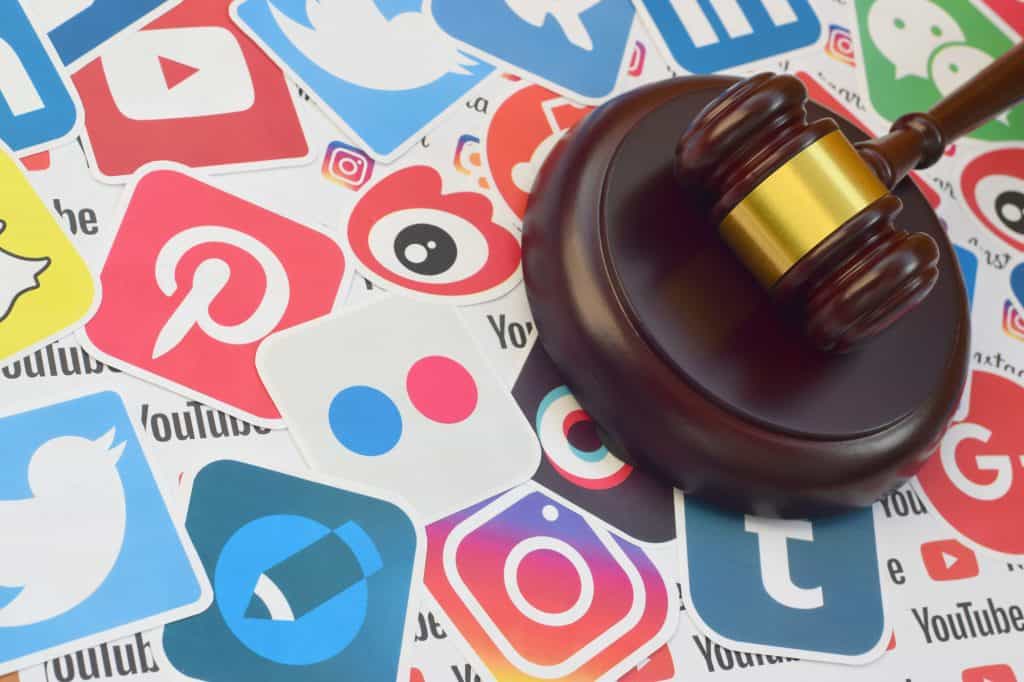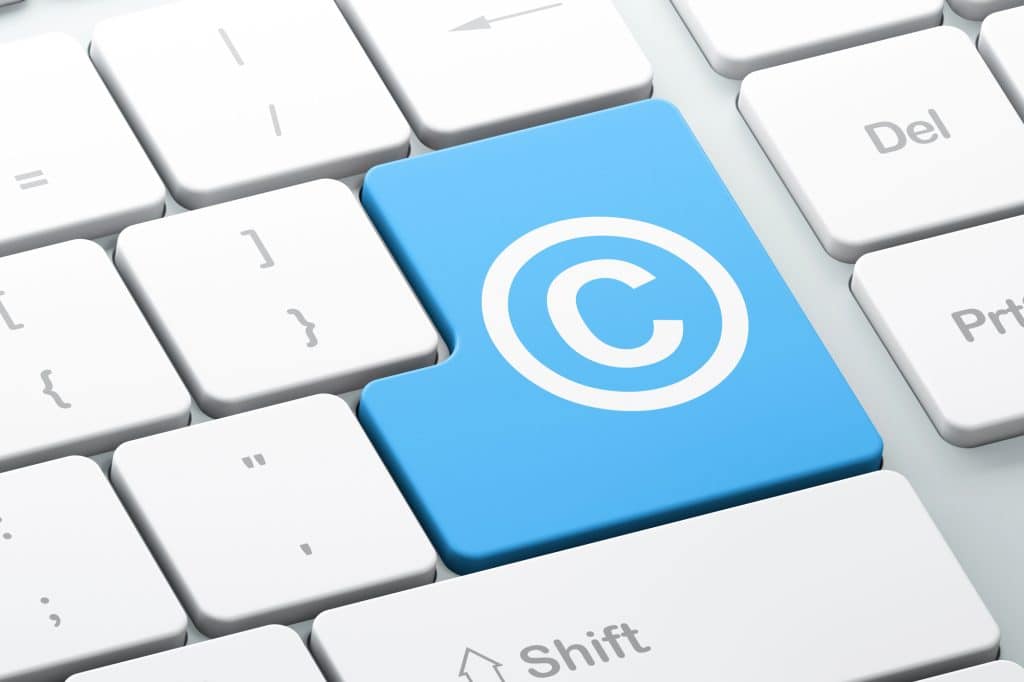Social Media is a powerful tool for connecting with people all over the world, but it is important to be aware of the risks that come with posting content. For your digital creations to be protected and respected, you must understand the rules of copyright infringement and take steps to ensure that your content is secure.
So, how do you protect your social media content from copyright infringement? This blog will explain everything you need to know about copyright infringement, its purpose, and how to protect your content from potential risks.
Table of Contents
What Exactly is Copyright Infringement?
Copyright infringement is an illegal activity where somebody uses another person’s creative work without permission or payment. It usually occurs when someone copies content from the internet without providing attribution or compensation to the original author.
There are several ways in which someone might commit copyright infringement. This includes:
- reposting images or videos without permission or attribution
- downloading music files illegally
- or modifying someone else’s work without their consent
Copyright infringement is a serious issue, as it deprives creators of their right to control their own work and the ability to benefit from their hard work. Under U.S. copyright law, anyone reproducing a creative work without permission can be subject to damages and potential criminal penalties.
How Does Copyright Work on Social Media?
Social media platforms such as Facebook, Twitter, Instagram, and YouTube all have their own set of rules when it comes to copyright infringement and plagiarism. However, contents on these platforms are still subject to applicable copyright laws.
So when you post something on your social media account, you retain ownership of that content. This means you have the right to control how your content is used.
As such, if someone reposts your copyrighted content without your express permission, it’s already an infringement of your rights as the creator. You can try to reach out to that person and have them remove the content. If it doesn’t work, you can contact a lawyer and pursue legal action against them.
On the flip side of the coin, posting the copyrighted work of others on your account without their permission also constitutes an infringement on their creator rights. In such a case, they can also take legal action against you.
The key to posting content without infringing on copyright is to only post what you are legally allowed to. This includes content that is in the public domain or content for which you have permission to post on your social media account.
Why is Plagiarism Rampant on Social Media?

Despite laws protecting copyrighted work, plagiarism has become such a common practice on social media that nobody bats an eye at it. Here are the top reasons why it’s happening:
1. Lack of punishment for copyright infringement
Despite the fact that social media stands among the most heavily regulated online platforms, it has become increasingly difficult to prosecute copyright infringers.
As a result, many people can get away with plagiarism on social media without any serious repercussions. This lack of punishment has caused rampant plagiarism, as it gives people the confidence to copy others’ work without fear of legal consequences.
If we look at platforms such as Instagram and Twitter, users can quickly copy content from other accounts and repost it as their own. It is a form of plagiarism, and it has become increasingly common on social media platforms due to the lack of punishment for copyright infringement.
2. Downloading images and videos is pretty easy
Downloading images and videos from the internet has become increasingly easy. With just a few clicks, anyone can copy someone else’s work without providing any attribution or credit. We have smartphones allowing us to download images or videos for free with just a few taps.
As a result, people are able to access and replicate works that they’d otherwise have to pay for or gain permission to use. This has become one of the biggest reasons why plagiarism is rampant on social media.
For example, people are cropping videos of other people, using them as Instagram reels or YouTube shorts, and making money without crediting the original creator.
Similarly, people are taking screenshots of memes or other funny images, adding a filter and captions to them, and posting them as their own content. Such posts often go viral, drawing a lot of attention to the person who posted them instead of their original creator.
3. Identifying original image ownership can be challenging
As mentioned earlier, when a post goes viral, it draws attention to the person who posted them rather than their actual owner.
When you see so many people reposting something with no indication of where it came from, it can be hard to know who the original creator is. This makes it difficult to identify the source of the content and give them proper credit. As a result, it encourages more people to copy and repost content without bothering to find their original owners.
4. There are limited tools to track if one’s content is being plagiarized
Even with the advancement of technology, it is still very difficult to track if one’s content is being plagiarized on social media. Algorithms that can detect copied content aren’t widely used, and there are often no reliable tools to track if someone has stolen another person’s content. This makes it easier for plagiarists to steal and repurpose content without getting caught.
One example of this is the rise in “copycat accounts” on Instagram. Copycat accounts are social media pages that copy content from other Instagram accounts without changing text or images. These accounts can quickly build followers and influence due to their ability to repost content without being detected too soon.
5. Most content creators don’t bother copyrighting their posts
Reposting something that is under copyright is a form of plagiarism. However, most content creators don’t bother copyrighting their posts, making it hard for them to protect themselves from plagiarism.
For example, if a content creator posts an image or video with no copyright protection, it is easy for someone to copy and repost it without any repercussions.
In such type of situations, plagiarizers are given free rein to copy and repost content without any fear. And it is perhaps the biggest reason why plagiarism has been running rampant on social media.
6. Fake profiles make it hard to prosecute copyright violations
Fake profiles are everywhere, especially on popular social media platforms like Instagram. People create these fake profiles to avoid detection when they copy and repost other people’s content without giving credit.
As a result, it is hard for the original creator to take legal action against the person stealing their content since tracking down and prosecuting a fake profile is nearly impossible.
This again causes rampant plagiarism on social media because it gives people a sense of impunity when they copy and repost someone else’s content without giving them credit.
For example, people can create fake accounts with false information and use them to repost content as though it were their own. Additionally, these fake accounts can be used to get around copyright violations since the original creator can’t track down and prosecute the account holder.
Tips to Protect Your Content on Social Media

We care about your social media content, so here are some tips to help protect it from copyright infringement:
1. Familiarize yourself with the platform’s copyright policies
The best way to protect your content on social media is to familiarize yourself with the platform’s copyright policies. Each platform has different copyright policies that dictate what can be shared and by whom. For example, Instagram’s copyright policy prohibits the use of copyrighted material without permission.
Any content posted on Instagram must either be original or have authorization from the copyright holder. To make sure your content is legally protected, you should take a few minutes to read the platform’s copyright policies before posting your content.
2. Include a watermark
A watermark is a small logo or text that is placed on an image or video to identify the copyright holder. Watermarks help protect content from being stolen or used without authorization. Here’s how you can add a watermark to your social media content:
- Choose a logo or text that will be used as your watermark.
- Create a transparent PNG file of your logo or text.
- Open the image or video you want to add a watermark to in an editing program like Adobe Photoshop.
- Add the watermark to the image or video by positioning it anywhere on the image.
- Save the file and upload it to your social media platform.
3. Include a copyright notice
Just like blog websites, you can protect your social media content by including a copyright notice. A copyright notice is a statement that informs viewers of the copyright holder’s rights to the content. It can be as simple as using a copyright symbol along with a statement saying “© (Your Name) All Rights Reserved” at the bottom of each post. This can help protect your content by sending a clear message that you own the rights to it.
Including a copyright notice on your posts is relatively easy. First, decide how you want to present the notice. You can simply write it out in text or create an image with the copyright information. Once you’ve decided, you can add the notice manually to each post or use social media scheduling tools like Hootsuite and Buffer to automatically include the copyright information in your posts.
4. Keep evidence to prove that the original content is yours
One of the best ways to protect content on social media is to keep evidence that the original content is yours. This will serve as your proof in case you want to have plagiarized content taken down or pursue legal action.
There are different ways to provide proof of ownership for social media content, such as:
- Take screenshots and save them: Screenshots of your written posts, accompanied by the original post’s URL, are a great way to prove authorship. This method usually requires that you save or print out the screenshots, as well as make a record of when the content was published.
- Link to your profile on the platform: This method is useful if you share content with other social media users. Linking to your profile is a great way to ensure the content is attributed to you.
5. Notify the other party about the unauthorized use of your content
If you find that someone has used your content without your permission, taking action is important. The best way to protect your content is to notify the other party that they are violating your copyright. This will help you take control of the situation and show the other party that you will not tolerate unauthorized use of your content.
To notify the other party about the unauthorized use of your content, you can take the following steps:
- Gather evidence that shows the content is yours. This should include screenshots, links to your profile, and watermarked images.
- Send a polite yet firm message to the other party asking that they stop using your content without your permission.
- If the other party does not comply, consider taking legal action.
6. Report the violation to the site host
Social media sites are now taking more steps to protect their users’ content. Most sites have a system in place to report copyright violations, and many offer protection against intellectual property theft.
When reporting the violation to the site host, make sure you perform the following steps:
- You must have evidence to prove the content belongs to you.
- Make a statement about the violation, providing as much detail as possible and including links to your original content.
- Include contact information in case the site host needs additional information.
- Submit the report directly to the social media platform or through an online form.
Once you’ve reported the violation, the site host will investigate and take action if necessary. This may result in a warning to the other party, removal of their content, or even a ban from the site.
7. Consider legal actions
If nothing works and the other party continues to use your content without your permission, then it’s time to consider taking legal action. Legal actions can include filing a copyright lawsuit or an injunction.
To take legal action, you should first consult with a lawyer that specializes in intellectual property law. They can advise you on the best course of action and assist with filing a copyright lawsuit or an injunction against the other party.
When taking legal action, you will need to provide evidence of your ownership of the content, as well as evidence that the other party is using it without permission. This could include screenshots or printouts of the content and copies of any communications with the other party.
If a copyright lawsuit is successful, it can result in an award of monetary damages for the infringement. An injunction can also be requested to stop the other party from using or profiting from your content.
Wrapping It Up
Protecting your content on social media can be a challenge, but doing so is important. There are many consequences of not copyrighting your content. If you want to make sure that your content remains yours, make sure to protect it from copyright infringement. Try the tips we shared in this blog, and if you are still confused, let us know in the comments or contact us!


